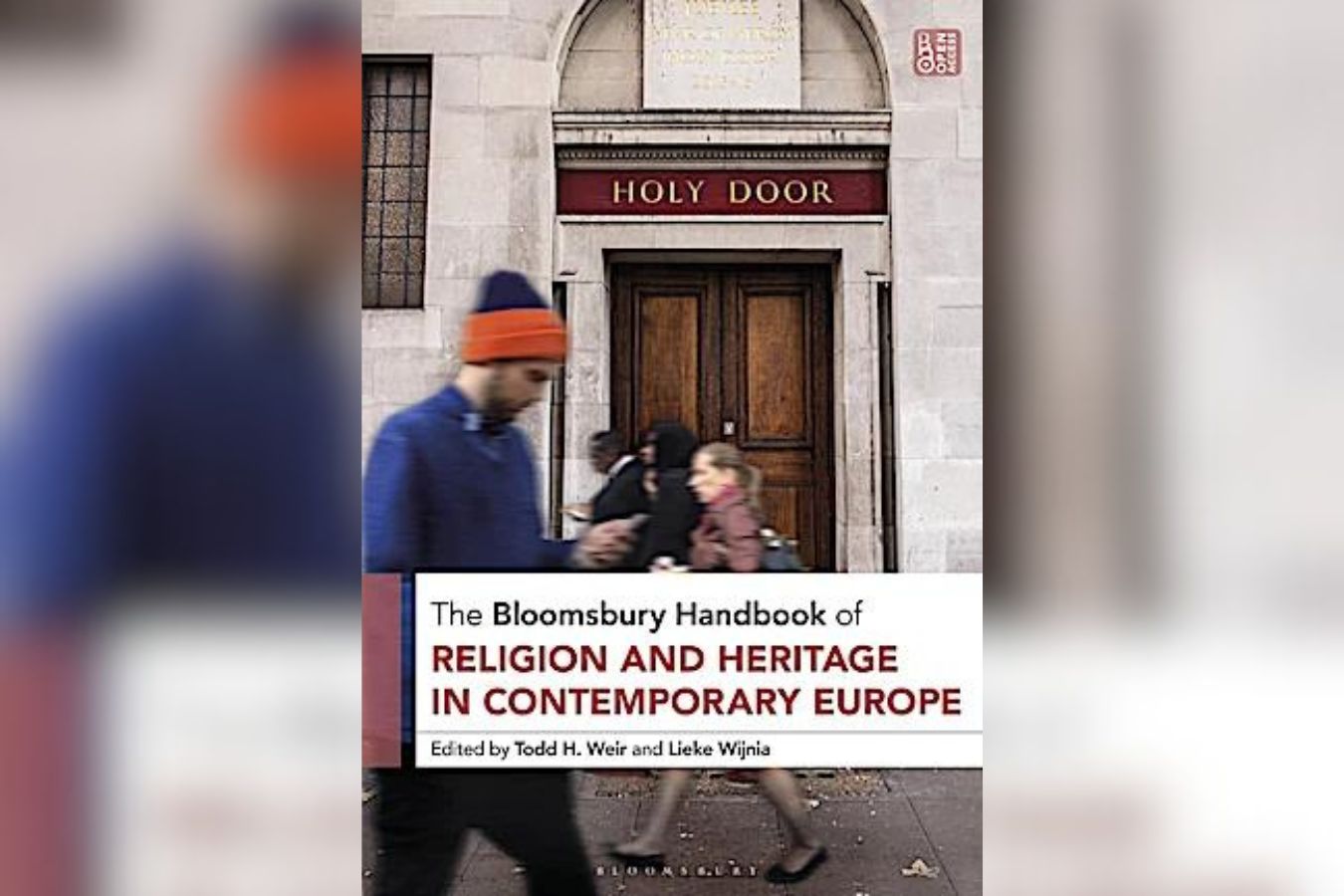
Cover of the Bloomsbury Handbook of Religion and Heritage in Contemporary Europe.
The long-awaited Bloomsbury Handbook of Religion and Heritage in Contemporary Europe has just been published. This state-of-the-art guide is available online and open access, and is a valuable resource for teachers, students, academics, heritage professionals and anyone interested in religious heritage. It offers readers 44 contributions by leading international scholars, policy makers and heritage practitioners, who explore the key challenges facing the organizations, churches, and government bodies concerned with religion and heritage.
The book is organized around major themes, including the place of heritage in Jewish, Muslim and Christian communities, and the relationship of heritage to the (post)secular, sacred texts, museums, architecture and contemporary art. Through case studies and analyses, the contributions explore some of the key challenges currently facing religious heritage in a rapidly changing landscape. They track the shifting significance of Europe’s historic churches, synagogues, and mosques, many of which are caught between declining numbers of worshippers, increasing numbers of tourists, and the pressure to find new uses. Many contributions also touch on the key role heritage is playing in political discourse, where it is mobilized to include or exclude religious minorities.
Prominent heritage scholars have already acclaimed the book. Gretchen Buggeln, a leading US expert on religion in museums, called it a “much needed collection of timely essays that open an expansive window onto creative and thoughtful contemporary approaches to the preservation and use of both material and intangible heritage.”
According to Cyril Isnart, co-editor of the Religious Heritage Complex (2020), the volume “will feed debates on religion and identity, ritual and materiality, diversity and nationalism, post-secular dynamics, minority empowerment and theoretical challenges to religion-heritage relations.”
The book emerged from a multi-year cooperation of Dutch and international heritage organizations and the University of Groningen. Its editors are Todd H. Weir, professor of history of Christianity and former director of the Groningen Centre for Religion and Heritage, and Lieke Wijnia, who is Head of Curation and Library at Museum Catharijneconvent in Utrecht.
In their introduction, the editors state that “the starting point for this volume is the interaction we see taking place between university scholars and those in museums, government agencies, and church and heritage foundations who actively contribute to the making of heritage… In illuminating the space of convergence that lies between scholarship and practice, this handbook makes its specific contribution.”
The book can be accessed for free via the Bloomsbury website: https://www.bloomsburycollections.com/monograph?docid=b-9781350251410
Or ordered in a print version at: https://www.bloomsbury.com/uk/bloomsbury-handbook-of-religion-and-heritage-in-contemporary-europe-9781350251380/
Support of Future for Religious Heritage
This handbook is the culmination of a collaboration that began in 2017, when the Center for Religion and Heritage at the University of Groningen and the Historic Church Foundation Groningen decided to organize an international conference under the title Religious Heritage in a Diverse Europe. More partners, among them Future for Religious Heritage, Museum Catharijneconvent and Jewish Cultural Quarter joined in the course of the organization of this conference, which was co-convened by the editors of this handbook. All these partners have also helped in the creation of the book, both in terms of written work and financial support.
Launch event in Groningen in January 2024
There will be a book launch at the University of Groningen on Tuesday afternoon, January 23, 2024. For further information on the book or to join the launch in person or online, please contact Todd Weir (t.h.weir@rug.nl) or Lieke Wijnia (l.wijnia@catharijneconvent.nl)





Follow us: